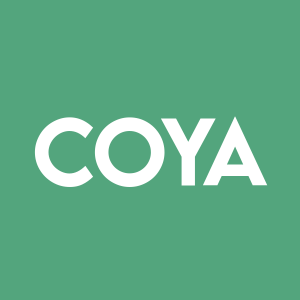Coya Therapeutics Announces the Completion of a Controlled Phase 2 Study of Low Dose Interleukin-2 (LD IL-2) in Patients with Alzheimer’s Disease
This investigator-initiated, double-blind, placebo-controlled study (funded by the Gates Foundation and Alzheimer’s Association) evaluates the safety and tolerability, biological activity, and preliminary efficacy of LD IL-2 in 38 patients with mild-to-moderate Alzheimer’s disease (AD) over 30 weeks
Previously reported data from an open-label, proof-of-concept study in eight AD patients illustrated that treatment with LD IL-2 resulted in a statistically significant improvement in cognitive function relative to baseline and significant enhancement of Regulatory T cell (Treg) function and numbers
Phase 2 top line data on track to be reported in summer of 2024
This controlled Phase 2 study will evaluate the safety, tolerability, and biological activity of LD IL-2 in patients with AD compared to placebo at pre-specified intervals. Additionally, blood and cerebrospinal fluid biomarkers, neuroimaging results, and changes in cognitive function will be evaluated across the different patient populations.
Fred Grossman D.O., President and CMO of Coya Therapeutics, stated, “This is an important study that will help advance our expanding pipeline in dementia. We look forward to unblinding the data from this controlled study in Alzheimer’s Disease and releasing the top-line results this summer.”
In the study, a total of 38 patients were randomly assigned to receive commercial subcutaneous LD IL-2 at two different dosing regimens, or matching placebo, over 21 weeks followed by a 9-week follow-up period after the last dose. The first patient cohort was randomized to receive LD IL-2 for five consecutive days every four weeks and the second cohort was randomized to receive LD IL-2 for five consecutive days every two weeks.
Coya previously reported that treatment with LD IL-2 significantly expanded Treg population and function in an open-label proof-of concept study in eight patients with AD. The mean (SD) percentage of Tregs significantly increased from 4.55 (1.97) at baseline to 8.68 (2.99) [p=0.0004] at the end of treatment. Mean (SD) Treg suppressive function significantly increased from
In addition, an evaluation of cognitive function showed that administration of LD IL-2 resulted in a statistically significant improvement in mean Mini-Mental State Examination (MMSE) scores during the treatment phase, compared to mean MMSE score at baseline (p=0.015). Consistent with the positive trend in MMSE score, mean scores in ADAS-Cog and CDR-SB scales did not significantly change at the end of treatment with LD IL-2, compared to pre-treatment baseline scores, indicating no cognitive decline as measured by these validated instruments.
Overall, administration of LD IL-2 appeared to be well tolerated in the eight patients in the open-label, proof-of concept study. The most common adverse events were mild injection-site reactions and mild leukopenia. No serious adverse events were reported, and no patient discontinued the study.
About Alzheimer’s Disease
Alzheimer's disease is the most common cause of dementia, a general term for memory loss and other cognitive abilities serious enough to interfere with daily life. Alzheimer's disease accounts for up to
References
- Alzheimer’s Association (www.alz.org).
- Centers for Disease Control and Prevention (www.cdc.gov).
About COYA 302
COYA 302 is an investigational and proprietary biologic combination therapy with a dual immunomodulatory mechanism of action intended to enhance the anti-inflammatory function of regulatory T cells (Tregs) and suppress the inflammation produced by activated monocytes and macrophages. COYA 302 is comprised of proprietary low dose interleukin-2 (LD IL-2) and CTLA-4 Ig and is being developed for subcutaneous administration for the treatment of patients with ALS, FTD, and PD. These mechanisms may have additive or synergistic effects.
In February of 2023, Coya announced results from a proof-of-concept, open-label clinical study evaluating commercially available LD IL-2 and CTLA-4 Ig in a small cohort of patients with ALS conducted at the Houston Methodist Research Institute (
During the 48-week treatment period, the therapy was well tolerated. The most common adverse event was mild injection-site reactions. No patient discontinued the study, and no deaths or other serious adverse events were reported.
Patients' disease progression was measured using the ALSFRS-R scale, a validated rating tool for monitoring the progression of disability in patients with ALS. The mean (±SD) ALSFRS-R scores at week 24 (33.75 ±3.3) and week 48 (32 ±7.8) after initiation of treatment were not statistically different compared to the ALSFRS-R score at baseline (33.5 ±5.9), suggesting significant amelioration in the progression of the disease over the 48-week treatment period.
Treg suppressive function, expressed as percentage of inhibition of proinflammatory T cell proliferation, showed a statistically significant increase over the course of the treatment period and was significantly reduced at the end of the 8-week washout post-treatment period. Treg suppressive function at 24 weeks (79.9 ±9.6) and 48 weeks (89.5 ±4.1) were significantly higher compared to baseline (62.1 ±8.1) (p<0.01), suggesting enhanced and durable Treg suppressive function over the course of treatment. In contrast, Treg suppressive function (mean ±SD) was significantly decreased at the end of the 8-week washout period compared to end-of-treatment at week 48 (70.3 ±8.1 vs. 89.5 ±4.1, p <0.05).
The study also evaluated serum biomarkers of inflammation, oxidative stress, and lipid peroxides. The available data up to 16 weeks after initiation of treatment suggest a decrease in these biomarker levels, which is consistent with the observed enhancement of Treg function. The evaluation of the full biomarker data is ongoing.
COYA 302 is an investigational product not yet approved by the FDA or any other regulatory agency.
About Coya Therapeutics, Inc.
Headquartered in
Coya’s investigational product candidate pipeline leverages multiple therapeutic modalities aimed at restoring the anti-inflammatory and immunomodulatory functions of Tregs. Coya’s therapeutic platforms include Treg-enhancing biologics, Treg-derived exosomes, and autologous Treg cell therapy.
COYA 302 – the Company’s lead biologic investigational product or “Pipeline in a Product”– is a proprietary combination of COYA 301 (Coya’s proprietary LD IL-2) and CTLA4-Ig for subcutaneous administration with a unique dual mechanism of action that is now being developed for the treatment of Amyotrophic Lateral Sclerosis, Frontotemporal Dementia, Parkinson’s Disease, and Alzheimer’s Disease. Its multi-targeted approach enhances the number and anti-inflammatory function of Tregs and simultaneously lowers the expression of activated microglia and the secretion of pro-inflammatory mediators. This synergistic mechanism may lead to the re-establishment of immune balance and amelioration of inflammation in a sustained and durable manner that may not be achieved by either low-dose IL-2 or CTLA4-Ig alone.
For more information about Coya, please visit www.coyatherapeutics.com
Forward-Looking Statements
This press release contains “forward-looking” statements that are based on our management’s beliefs and assumptions and on information currently available to management. Forward-looking statements include all statements other than statements of historical fact contained in this presentation, including information concerning our current and future financial performance, business plans and objectives, current and future clinical and preclinical development activities, timing and success of our ongoing and planned clinical trials and related data, the timing of announcements, updates and results of our clinical trials and related data, our ability to obtain and maintain regulatory approval, the potential therapeutic benefits and economic value of our product candidates, competitive position, industry environment and potential market opportunities. The words “believe,” “may,” “will,” “estimate,” “continue,” “anticipate,” “intend,” “expect,” and similar expressions are intended to identify forward-looking statements.
Forward-looking statements are subject to known and unknown risks, uncertainties, assumptions and other factors including, but not limited to, those related to risks associated with the impact of COVID-19; the success, cost and timing of our product candidate development activities and ongoing and planned clinical trials; our plans to develop and commercialize targeted therapeutics; the progress of patient enrollment and dosing in our preclinical or clinical trials; the ability of our product candidates to achieve applicable endpoints in the clinical trials; the safety profile of our product candidates; the potential for data from our clinical trials to support a marketing application, as well as the timing of these events; our ability to obtain funding for our operations; development and commercialization of our product candidates; the timing of and our ability to obtain and maintain regulatory approvals; the rate and degree of market acceptance and clinical utility of our product candidates; the size and growth potential of the markets for our product candidates, and our ability to serve those markets; our commercialization, marketing and manufacturing capabilities and strategy; future agreements with third parties in connection with the commercialization of our product candidates; our expectations regarding our ability to obtain and maintain intellectual property protection; our dependence on third party manufacturers; the success of competing therapies or products that are or may become available; our ability to attract and retain key scientific or management personnel; our ability to identify additional product candidates with significant commercial potential consistent with our commercial objectives; ; and our estimates regarding expenses, future revenue, capital requirements and needs for additional financing.
We have based these forward-looking statements largely on our current expectations and projections about future events and trends that we believe may affect our financial condition, results of operations, business strategy, short-term and long-term business operations and objectives, and financial needs. Moreover, we operate in a very competitive and rapidly changing environment, and new risks may emerge from time to time. It is not possible for our management to predict all risks, nor can we assess the impact of all factors on our business or the extent to which any factor, or combination of factors, may cause actual results to differ materially from those contained in any forward-looking statements we may make. In light of these risks, uncertainties and assumptions, the forward-looking events and circumstances discussed herein may not occur and actual results could differ materially and adversely from those anticipated or implied in the forward-looking statements. Although our management believes that the expectations reflected in our forward-looking statements are reasonable, we cannot guarantee that the future results, levels of activity, performance or events and circumstances described in the forward-looking statements will be achieved or occur. We undertake no obligation to publicly update any forward-looking statements, whether written or oral, that may be made from time to time, whether as a result of new information, future developments or otherwise.
View source version on businesswire.com: https://www.businesswire.com/news/home/20240522968367/en/
Investors
David
david@coyatherapeutics.com
CORE IR
Bret Shapiro
brets@coreir.com
561-479-8566
Media
Kati Waldenburg
media@coyatherapeutics.com
212-655-0924
Source: Coya Therapeutics, Inc.







